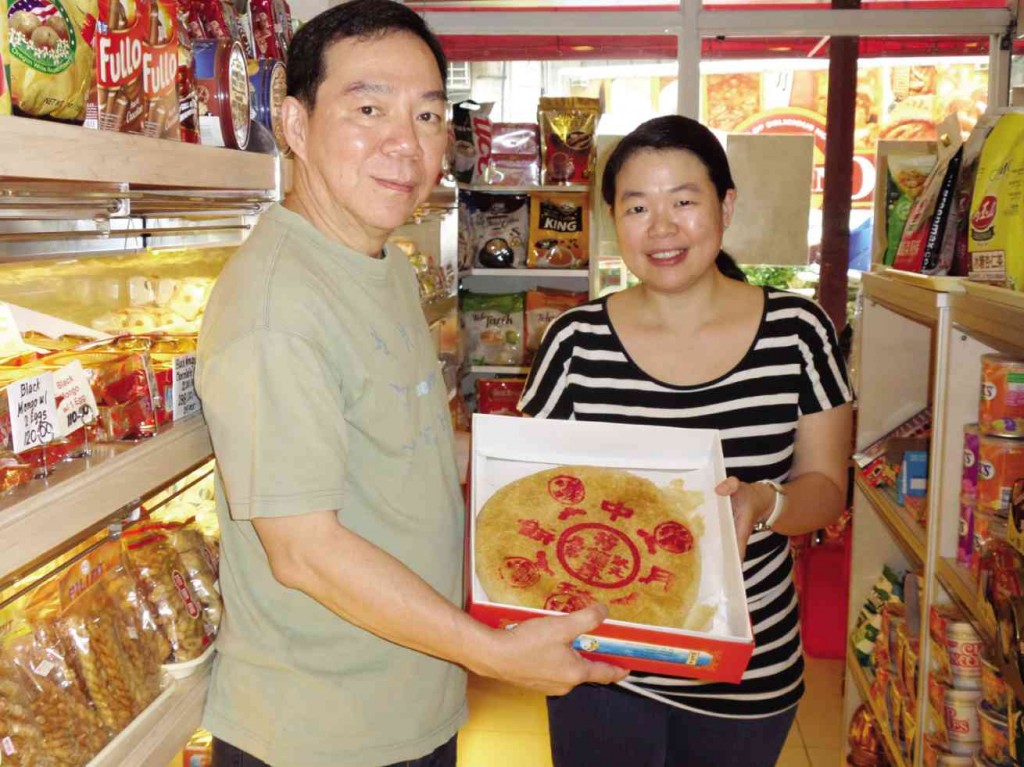

MANILA, Philippines–George Go says his father only wanted to make his own business distinct from his father’s, who ran Kingsland, when he set off on his own with Ho-land Hopia & Bakery.
“My father just picked the name Ho,” he says.
But for loyal patrons, Ho-land might as well be short for Hopia Land. Opened in the 1960s, Ho-land, for many hopia lovers, remains the standard for these small, round, (occasionally square) Chinese baked goodies.
Go believes one major reason is that, despite modern baking technology, Ho-land still makes its hopia in the traditional Chinese way, as close as possible to the methods introduced by his grandfather, a refugee of the Chinese revolution in the 1950s.
“This accounts for its authentic flavor,” he says.
Hopia, according to Go, is a combination of two Chinese words, “‘Ho’ means good while “pia” stands for cake or pastry.
Ho-land hopia costs a little more than the others but patrons, who come in steady streams every day from 8 a.m. to 8 p.m., do not seem to mind.
In Ho-land’s small—by today’s standards—main office on Yuchengco (formerly Nueva) St. in Binondo, at the heart of Manila’s famed Chinatown, hopia is still baked in an old-fashioned pugon (baking chamber) fueled by charcoal.
Bakers use the same recipes brought from China by the family patriarch.
Even the way the hopia-making process is taught to new bakers remains the same.
Go’s father learned it from his father and taught it to his son.
Ho-land’s bakers also acquire the skills the old-fashioned way, through apprenticeship, usually under the tutelage of their own fathers.
Packaging also stays close to the old wrapping method.
Everything Ho-land sells is freshly made every day and sold the same day.
Traditional flavors—monggo, black monggo and baboy (pork), kundol (winter melon)—remain the bestsellers although Ho-land, in keeping with changing tastes, now also makes pineapple and ube versions.
Go says Ho-land produces about 10 different flavors of hopia every day.
Most of the ingredients are locally sourced, Go says. But if there are supply shortages, and the company is forced to get from other sources, Ho-land makes it a point to inform clients of a possible difference in the quality.
“Our hopia has no artificial color and flavor and no extenders,” Go assures customers.
Of course, like any Chinese bakery, Ho-land also makes tikoy (the sticky pastry) and moon cake, celebratory items in the past but are now being made year-round by the bakery, according to Go.
Ho-land has also become a one-stop shop for Chinese delicacies, but Go is quick to explain that the other non-baked Chinese items are made by other traders in the Binondo area. He is just giving them an additional outlet for their products and making it convenient for Ho-land’s customers to buy other Chinese delicacies they may want in just one place.
“Hopia is our main product. My father told me not to venture into other people’s businesses,” Go says.
Go says their store only closes about four or five days a year-usually on important holidays like Christmas, New Year, Good Friday and All Saints Day.
Ho-land now has branches along Banawe Street, NBC Square along Congressional Avenue and at N. Domingo corner Gilmore Streets, all in Quezon City; and St. Francis Square in Mandaluyong City.
Like the main store, all branches carry only freshly made hopia from Binondo every day.
Bulk orders may be made through the main office at telephone number 2429595 and fax number 2436040.

